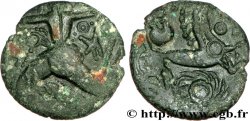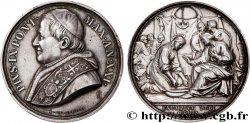fjt_013762 - LAFAYETTE (MARIE-JOSEPH-PAUL-ROCH-YVES-GILBERT MOTIER, MARQUIS OF) REFRAPPE pour LAFAYETTE (MARIE - JOSEPH - PAUL - ROCH - YVES - GILBERT MOTIER, MARQUIS DE) 1789
Not available.
Item sold on our e-shop (2011)
Price : 45.00 €
Item sold on our e-shop (2011)
Price : 45.00 €
Type : REFRAPPE pour LAFAYETTE (MARIE - JOSEPH - PAUL - ROCH - YVES - GILBERT MOTIER, MARQUIS DE)
Date: 1789
Metal : brass
Diameter : 32 mm
Orientation dies : 12 h.
Edge : lisse
Puncheon : corne BRONZE
Catalogue references :
Obverse
Obverse legend : MIS DE LAFAYETTE MAL DE CAMP COMDANT GAL DE LA GDE NALE PARNE ; À L'EXERGUE : DUMAREST F..
Obverse description : Buste de Lafayette signé DUMAREST F..
Reverse
Reverse legend : COMPIE DES GRENADIERS VOLONTAIRES DU IIIE BATAON VIE DIVON 1789.
Reverse description : Armes de Paris sur les drapeaux. Au-dessus, banderole portant : VIVRE LIBRE OU MOURIR..








 Report a mistake
Report a mistake Print the page
Print the page Share my selection
Share my selection Ask a question
Ask a question Consign / sell
Consign / sell
 Full data
Full data










